Field day - Noel and Christine Donelley's forest, Whareora
Dean Satchell, May 2021
Peter Davies-Colley co-hosted this harvesting-focussed field day with owners Noel and Christine. The 100 hectare forest took 5 years to plant in 100,000 radiata seedlings and 25,000 other species, mostly eucalypt and some Kawa poplar. Peter is harvesting “little bits” of the forest over time, one fifth of the forest so far from four harvests, netting $1 million so far. This means each area can be replanted and maintained at a scale the family is comfortable with.
Noel’s policy of growing the trees on to an age of thirty years provides financial benefit – high volumes of high-value logs. These trees are still putting on 1.5-2cm per year. The negative side is that Noel’s diameter tape has worn out. Also, the large piece size of up to 900 mm diameter does have its issues. Although a fully mechanised operation, some larger trees need to be manually felled, approx. 5% of the trees.
Trees were planted at a reasonably high stocking, pruned, then thinned down to 400 sph, yielding 880 tonnes per hectare at age 30. An experimental agroforestry planting of 300 stems per hectare, thinned to 100 stems per hectare yielded larger trees, but a lower volume of 500 tonnes per hectare. These trees have greater taper and less branch control.
The track gradient throughout the forest is greater than what an unloaded log truck can navigate, which in Peters words “colours the way we harvest here”.
T-winch
Peter owns the first T-winch brought into New Zealand from Austria (there are three more now) and we saw this in action on Noel’s slopes. This is a robotic remote-controlled winch that has 6 tonnes of pull. We saw a 40 tonne 300 hp flat base felling machine tethered to it. The machine climbed down a steep slope and harvested some trees. A tethered machine can harvest on a slope of up to 44 degrees, but Peters is limited to 36 degrees because that’s when oil comes out of the engine breather. The T-winch maxes out at 10 tonnes of pull, which is all you need to assist the harvesting machine. Maximum line speed is 4.5 km/hr. There is no integration between machines so you can simply unhook the T-winch and change machines.
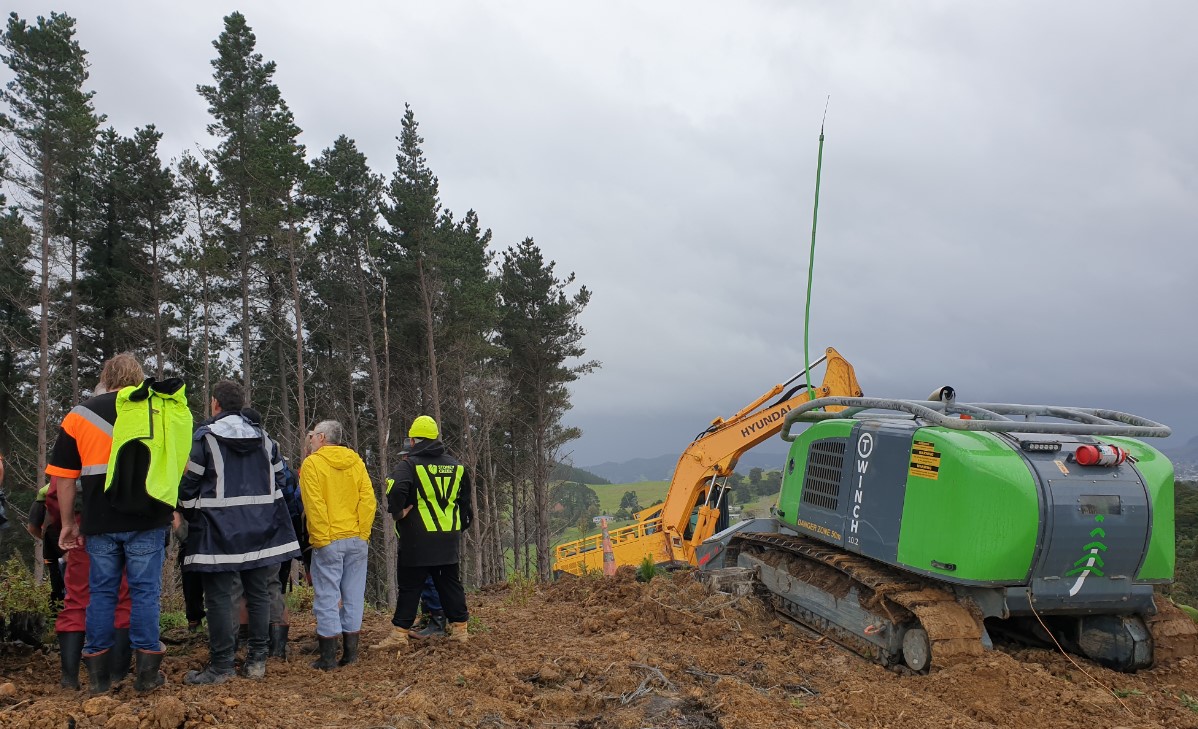
Where the T-winch really shines is its environmental outcome. Fewer harvest roads and tracks are required and because the harvesting machine is tethered, soil disturbance is minimised on the slope. Also, its carbon footprint is very small, consuming only 20 litres of diesel per day.
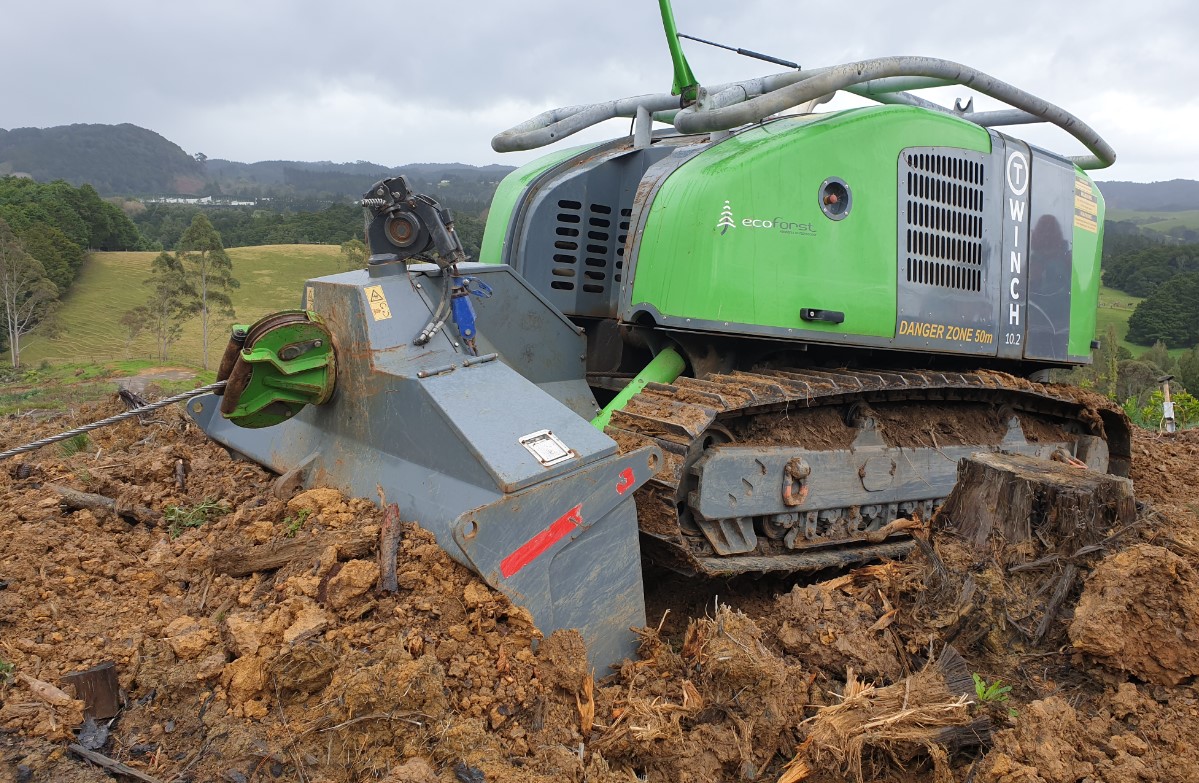
Peter also demonstrated his 4wd off-road "baby trucks", converted MAN 18280 4wd fertiliser spreaders with low flotation tyres. These hold 8 tonnes of logs and are used to forward the logs out of the bush via existing farm tracks, out to the loading area accessible by log trucks. These trucks are currently forwarding 250 tonnes of logs a day at Noel and Christine’s forest. They use very little fuel and have meant Noel and Christine didn’t need to build logging roads which cost $100,000 per km and can cause environmental problems i.e. generate sediment. Beyond the 36 degree maximum track slope, the only limitation is that maximum log length is 6.1m.
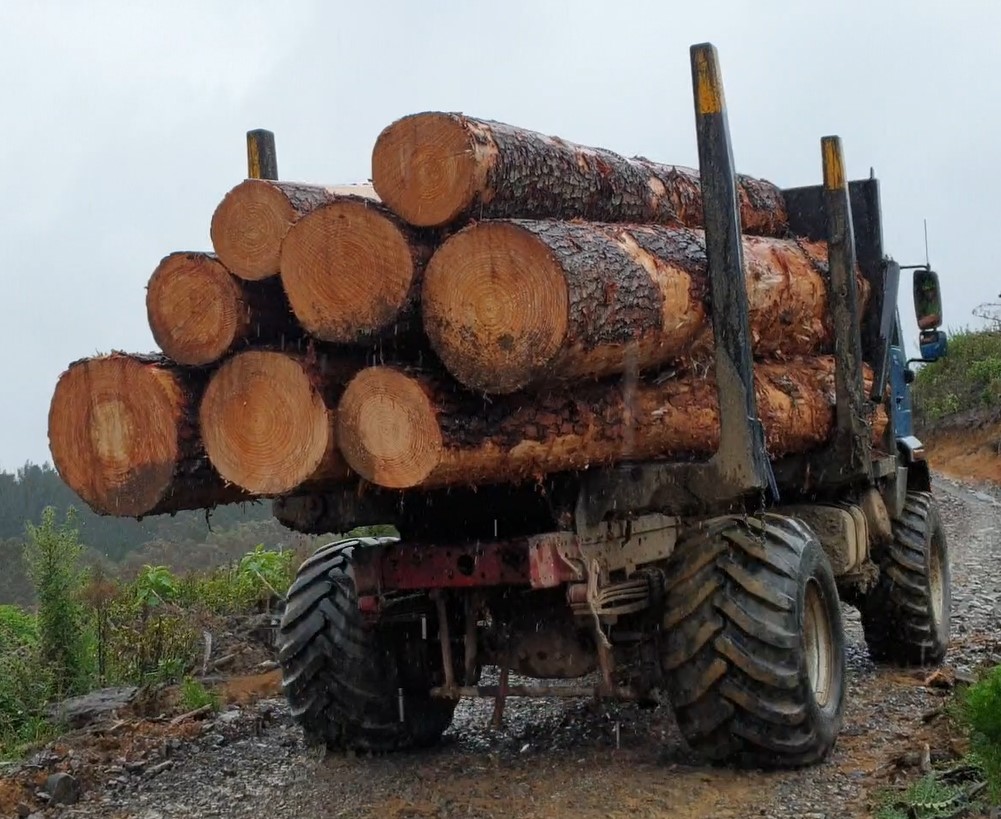
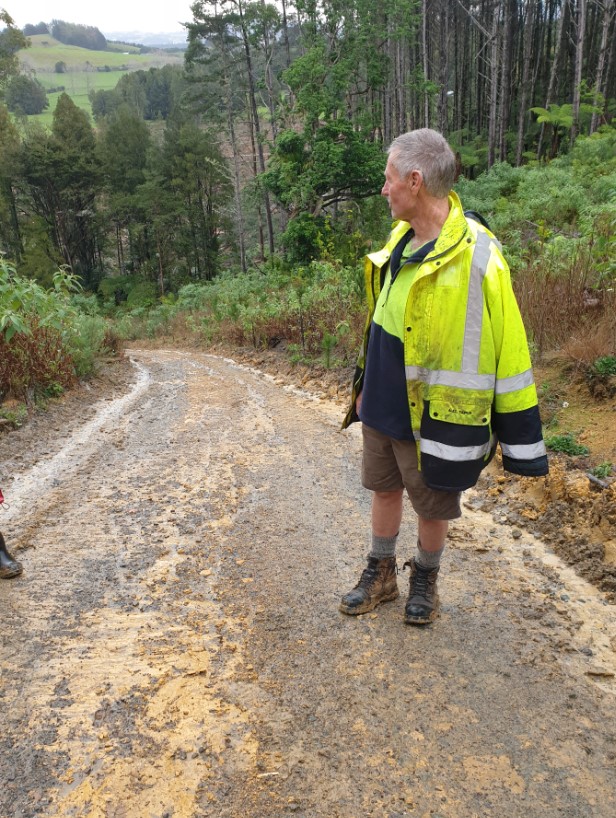
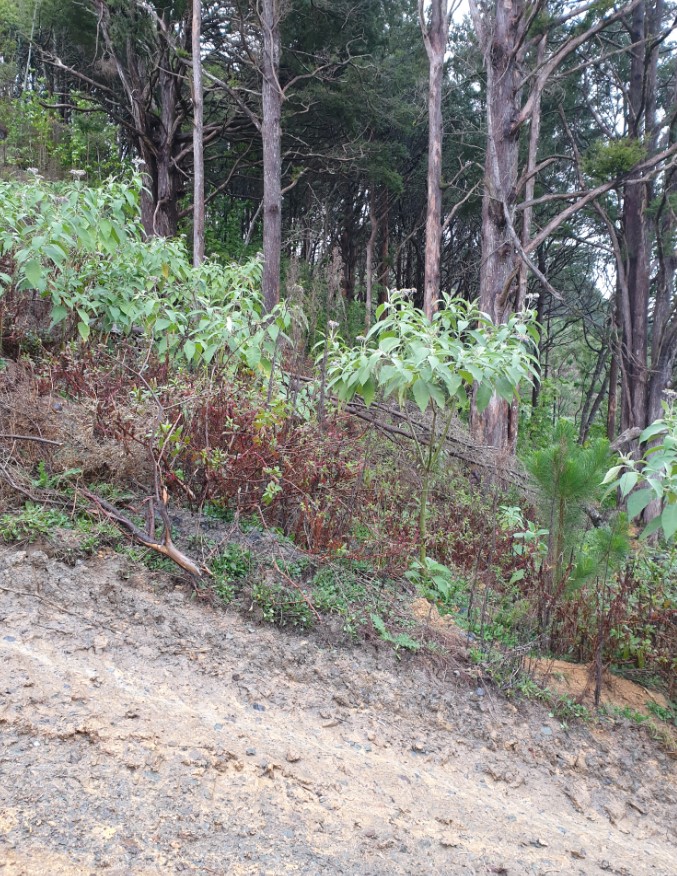
Noel has been replanting straight away after harvesting but is finding the tobacco weed regrowth problematic. He is considering leaving the harvested area fallow for a year, then blanket spraying before planting to control the weeds. Peters harvesting leaves very little slash on the ground and makes for easy planting.
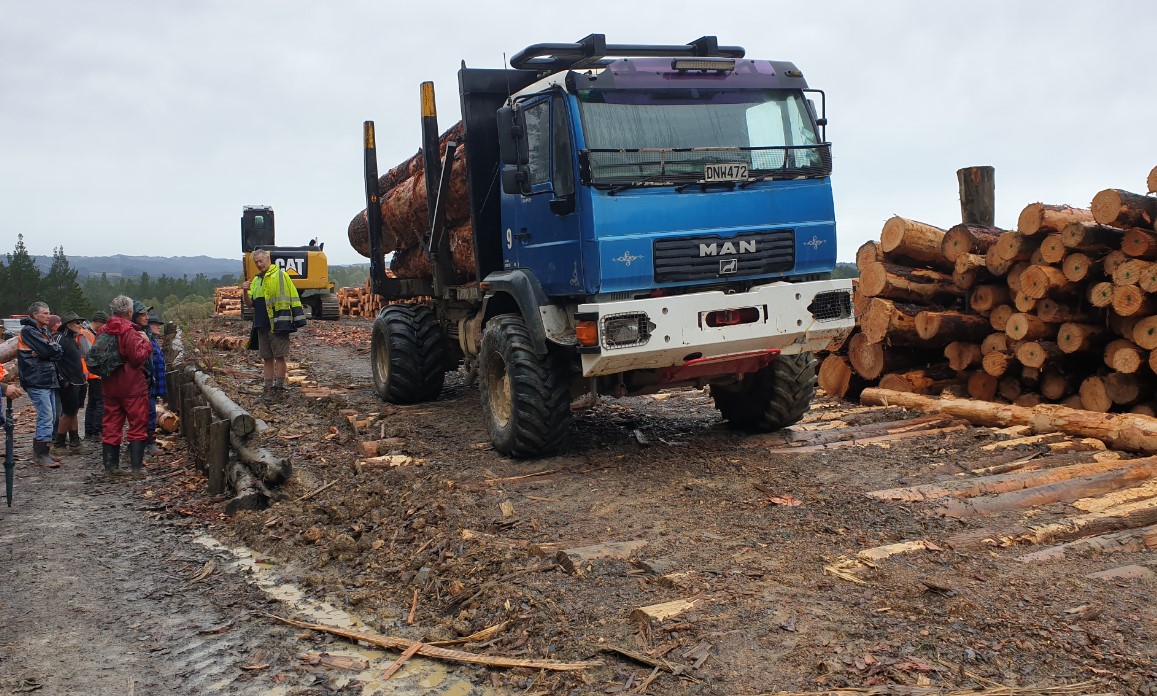
Specialty species
Kawa poplar has been planted in the wetter areas deemed unsuitable for radiata pine. What is now obvious is Kawa’s limitation in terms of soil drainage. In the boggy soils Kawa has not performed, but where there is some drainage Kawa has performed well.
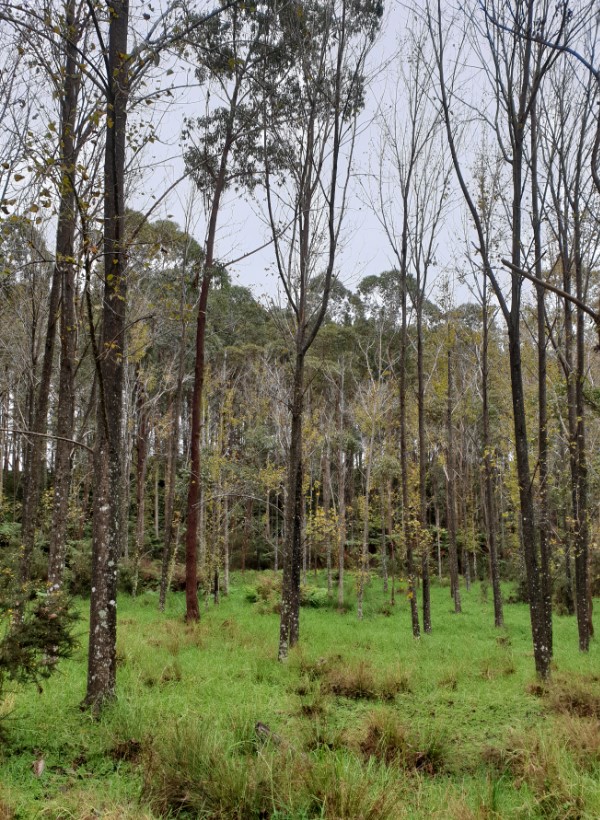
Kawa is definitely a complementary species for radiata in terms of siting. The export market for poplar is for 30cm + logs and currently not very lucrative with prices below radiata. Noting recent results showing excellent strength properties, there was discussion on the business opportunity for producing high-stiffness appearance structural product from Kawa, for example glulam beams. The data hasn’t been published yet, so early days, but there are opportunities to improve the market for poplar and value for the grower.
Noel was not very enthusiastic about planting poplar on slips but was very pleased with the growth and form of Eucalyptus pilularis planted into slip faces. However, the form of E. pilularis planted on higher-fertility areas was not so good. Discussion centred around the need for improved seedlots from trees selected for good form. Plenty of good trees though and the bigger eucalypt logs are going to Denis Budd’s Mid-Western sawmill at Maungakaramea. Smaller logs are being exported and lower quality logs are being sold for firewood, fetching prices better than radiata chip.
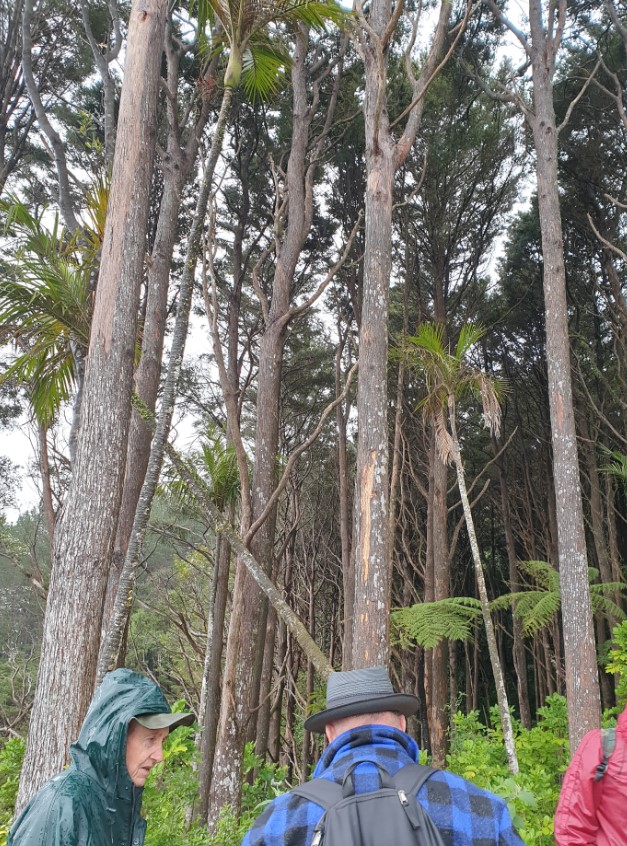
Thanks very much Noel and Christine for hosting the day and Peter for showing us his amazing technology in action. This is an exciting project with lots to learn about improved practices for forest harvesting and how innovation is leading the way towards a lower carbon footprint and less sediment getting into our water bodies.
